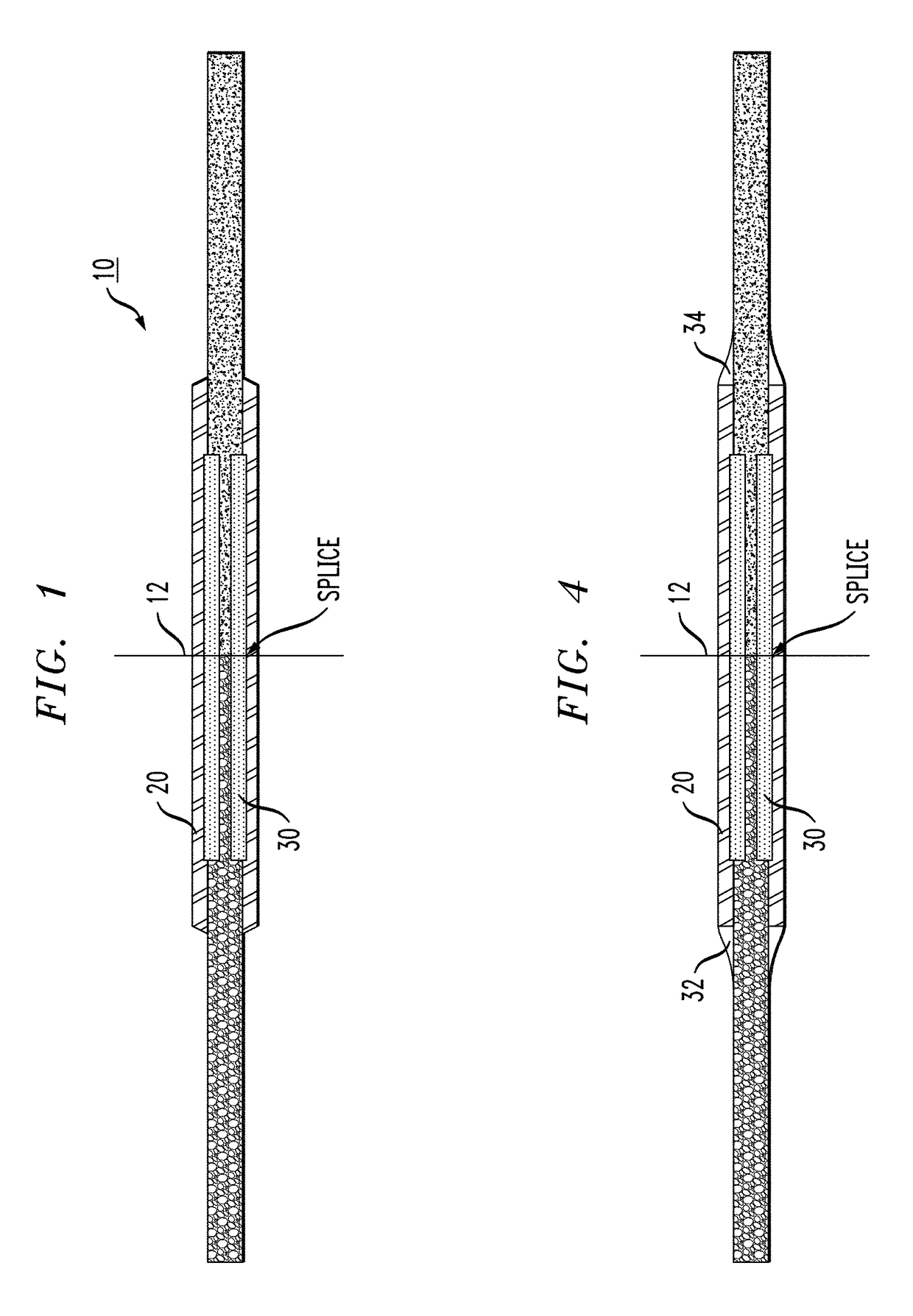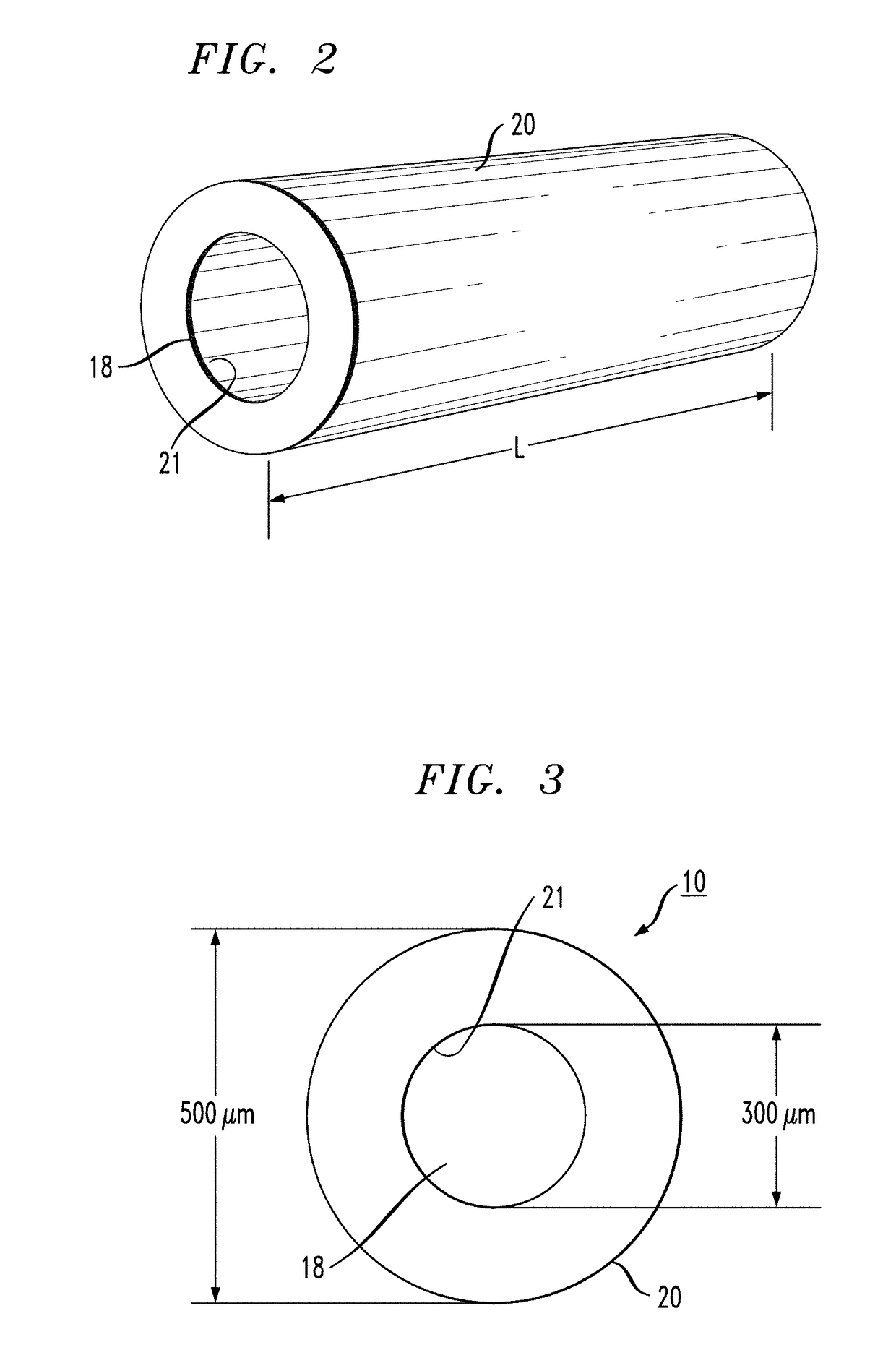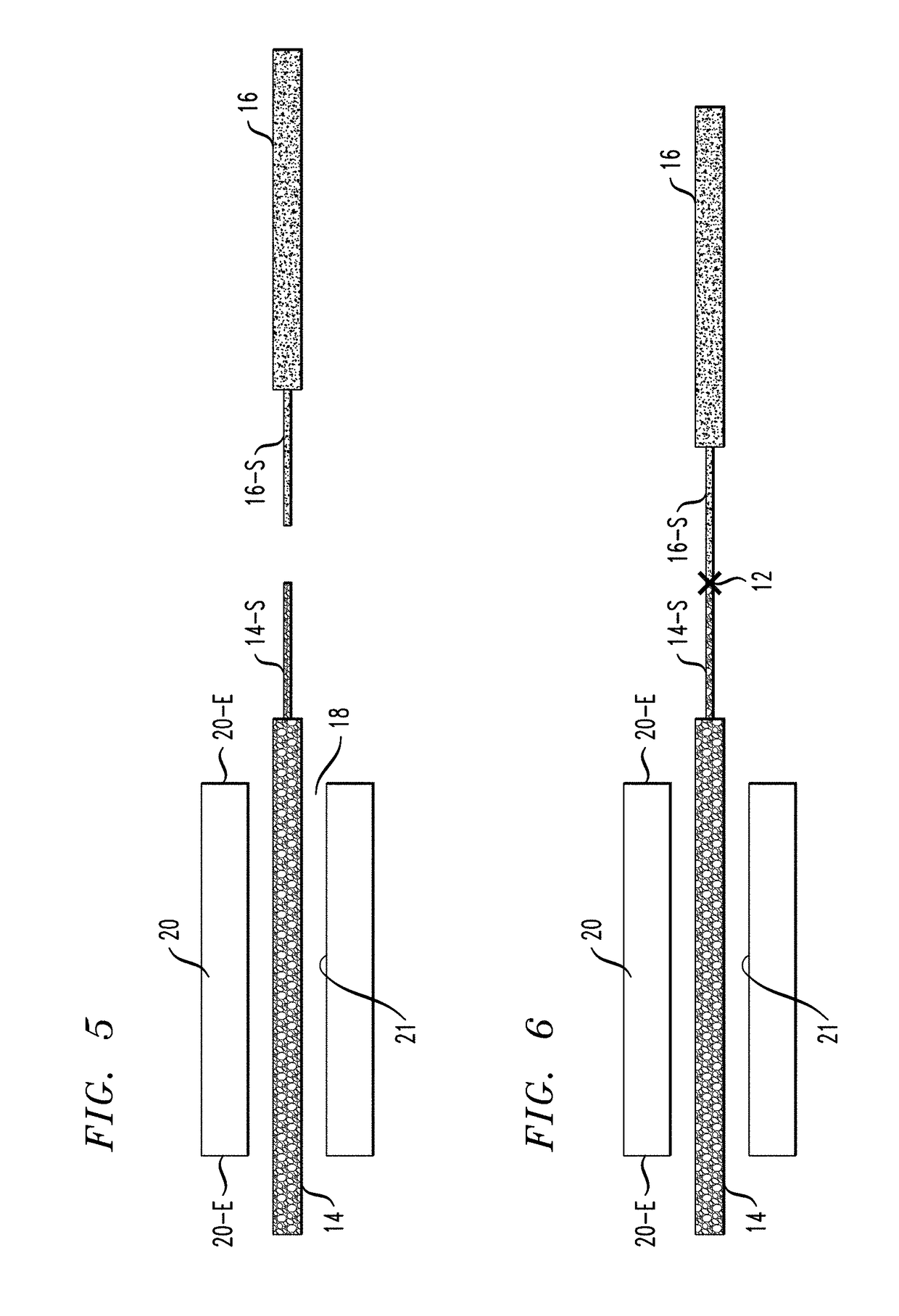Micro splice protector
a protector and micro-splice technology, applied in the field of fusion splice protectors, can solve the problems of compromising splices, requiring the size reduction of included components, limited space for optics and mechanics within these enclosures, etc., and achieves the effect of minimizing any damage to optical fibers and excellent material selection
- Summary
- Abstract
- Description
- Claims
- Application Information
AI Technical Summary
Benefits of technology
Problems solved by technology
Method used
Image
Examples
Embodiment Construction
[0034]A new type of splice protector is proposed that is small in size, easy to use, and works well within the current dimensions of CFP-based enclosures. Inasmuch as the inventive splice protector is only a few millimeters larger in cross-section than the fibers themselves, it is contemplated that it will remain useful even as packaging dimensions continue to decrease.
[0035]FIG. 1 is a cut-away side view of an exemplary micro splice protector 10 in place over a fusion splice 12 formed to join a first optical fiber 14 to a second optical fiber 16. As is well-known in the art, a fusion splice is created between endfaces of a pair of optical fibers that have been stripped to remove outer jacket and coating layers, leaving only the silicon-based core and cladding regions of the fibers. An electric arc, or other type of high energy pulse, is applied to the abutting endfaces so as to essentially melt the silicon material in a manner that joins the two fibers together. While a fusion spli...
PUM
 Login to View More
Login to View More Abstract
Description
Claims
Application Information
 Login to View More
Login to View More - R&D
- Intellectual Property
- Life Sciences
- Materials
- Tech Scout
- Unparalleled Data Quality
- Higher Quality Content
- 60% Fewer Hallucinations
Browse by: Latest US Patents, China's latest patents, Technical Efficacy Thesaurus, Application Domain, Technology Topic, Popular Technical Reports.
© 2025 PatSnap. All rights reserved.Legal|Privacy policy|Modern Slavery Act Transparency Statement|Sitemap|About US| Contact US: help@patsnap.com



